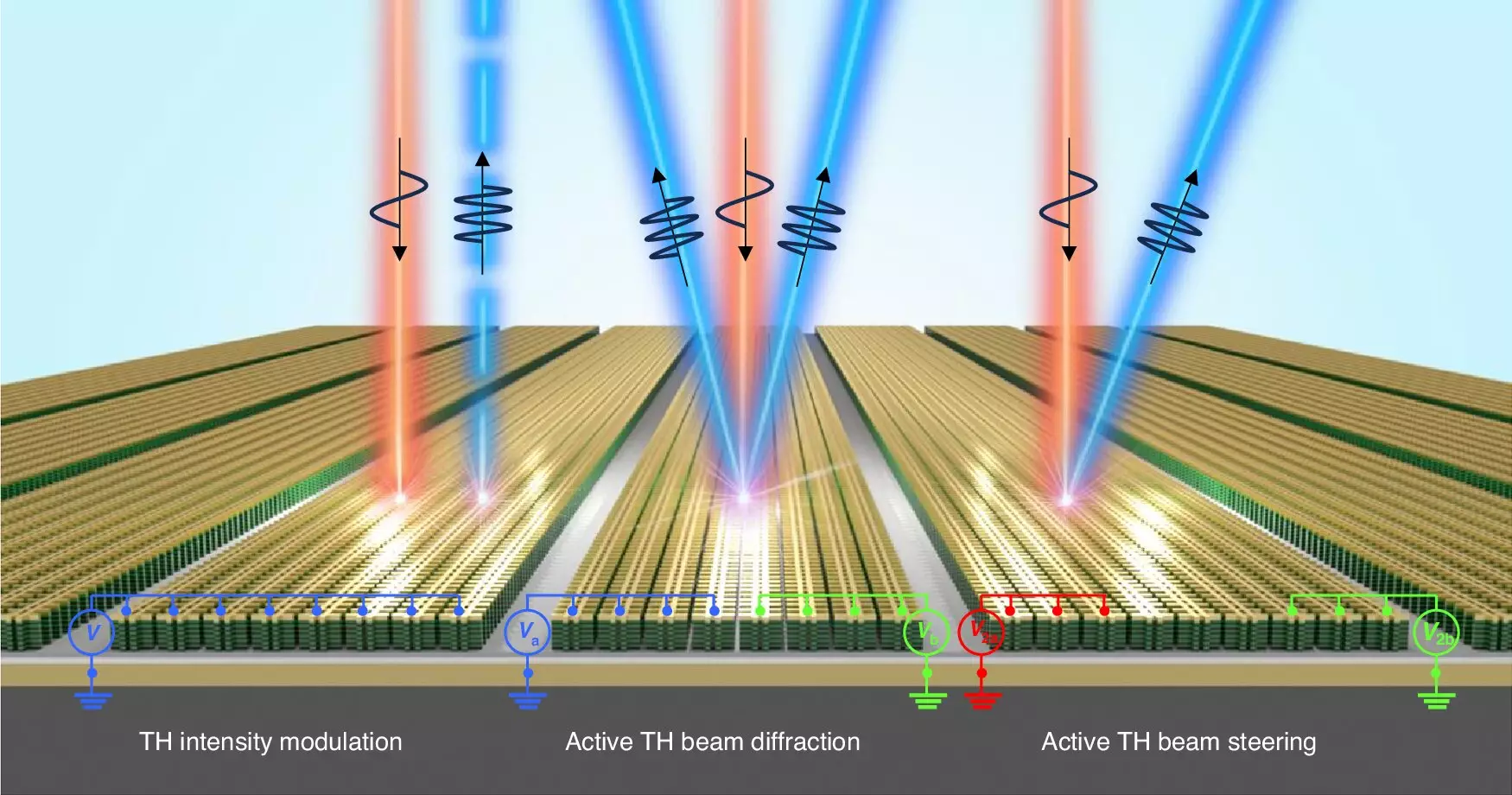Recent advancements in the field of nonlinear optics have opened doors to new technological possibilities that promise to reshape communication systems and medical devices. Central to these developments is a newly introduced nonlinear optical metasurface technology, which operates on a nanoscale level—smaller than the wavelength of light itself. Researchers have highlighted how this technology can serve as a cornerstone for next-generation applications, making it essential for both quantum light sources and innovative diagnostic tools in medicine.
A pioneering study led by Professor Jongwon Lee at UNIST has birthed the first practical examples of electrically tunable third-harmonic generation (THG) using an intersubband polaritonic metasurface, integrated with multiple quantum wells (MQWs). This research, published in the journal Light: Science & Applications, underscores a notable achievement—as the team managed to achieve an exceptional modulation depth of 450% in the THG signal. Notably, they demonstrated an impressive 86% suppression of zero-order THG diffraction and local phase tuning exceeding 180 degrees. This degree of control marks a significant leap forward in the field, presenting new functionalities for optical devices.
Technological Implications and Advantages
The ramifications of this technology extend far beyond theoretical interest. The ability to create electrically adjustable flat nonlinear optical elements can revolutionize how we approach the design of compact optical instruments. Imagine laser devices as thin as paper and composed of materials less than a human hair’s width—this vision is now closer to reality thanks to this innovative metasurface approach. What sets this technology apart from previous methodologies is its capability for electrical control, which has historically been a challenging aspect of developing nonlinear optical systems.
Among the standout features of this research is the introduction of the ability to control second-harmonic generation (SHG) through voltage application. This technique permits independent modulation of both the intensity and phase of the THG signal, granting unprecedented command over the wavelength and overall behavior of light. Professor Lee elucidates the transformative potential of this capability by stating, “By adjusting the intensity and phase of nonlinear THG through electrical means, we open new avenues for applications in light modulation for cryptography, dynamic holography, next-generation quantum sensors, and quantum communication light sources.”
The recent breakthroughs in nonlinear optical metasurface technology signify a transformative moment in the manipulation of light and matter. The work of Professor Lee and his collaborators not only marks a remarkable achievement in the field of photonics but also provides a foundation for future innovations that can enhance data transmission, improve medical diagnostics, and support advanced security measures through cryptography. As these technologies evolve, they will undoubtedly lead to more compact, efficient, and versatile optical instruments that surpass their conventional counterparts. The future of light manipulation appears promising as we stand on the cusp of a new era in nonlinear optics.


Leave a Reply